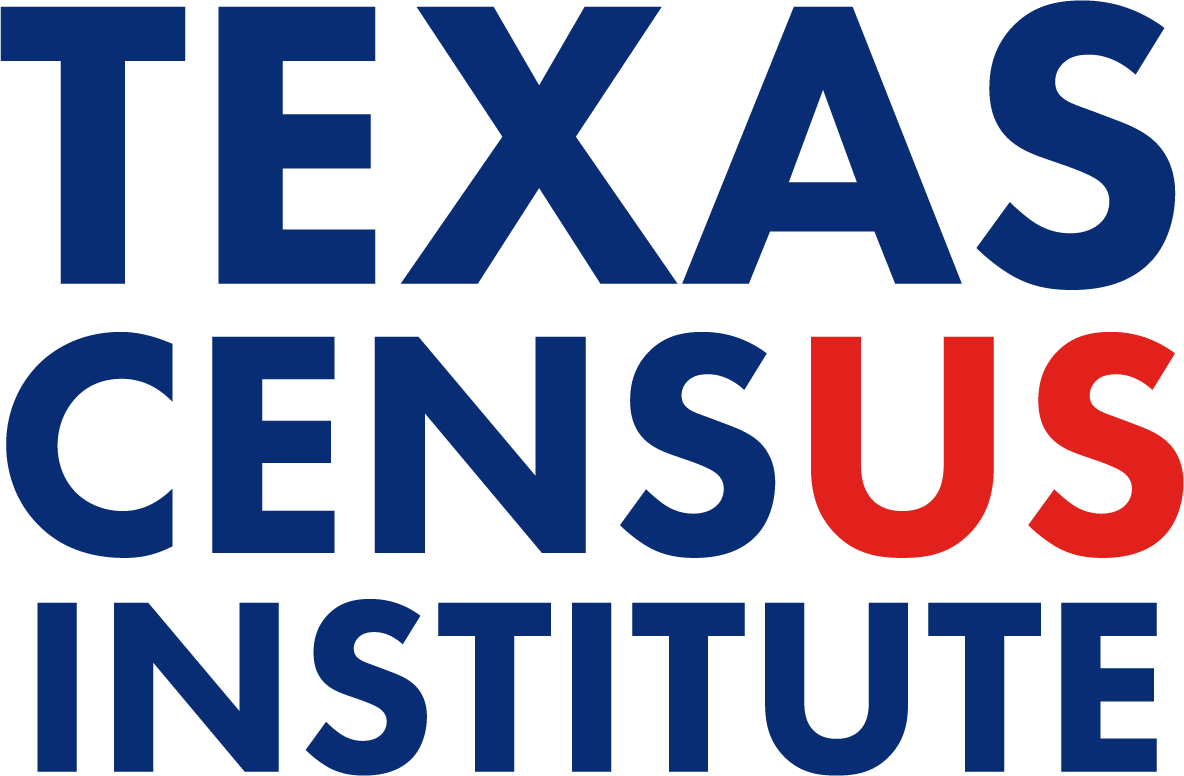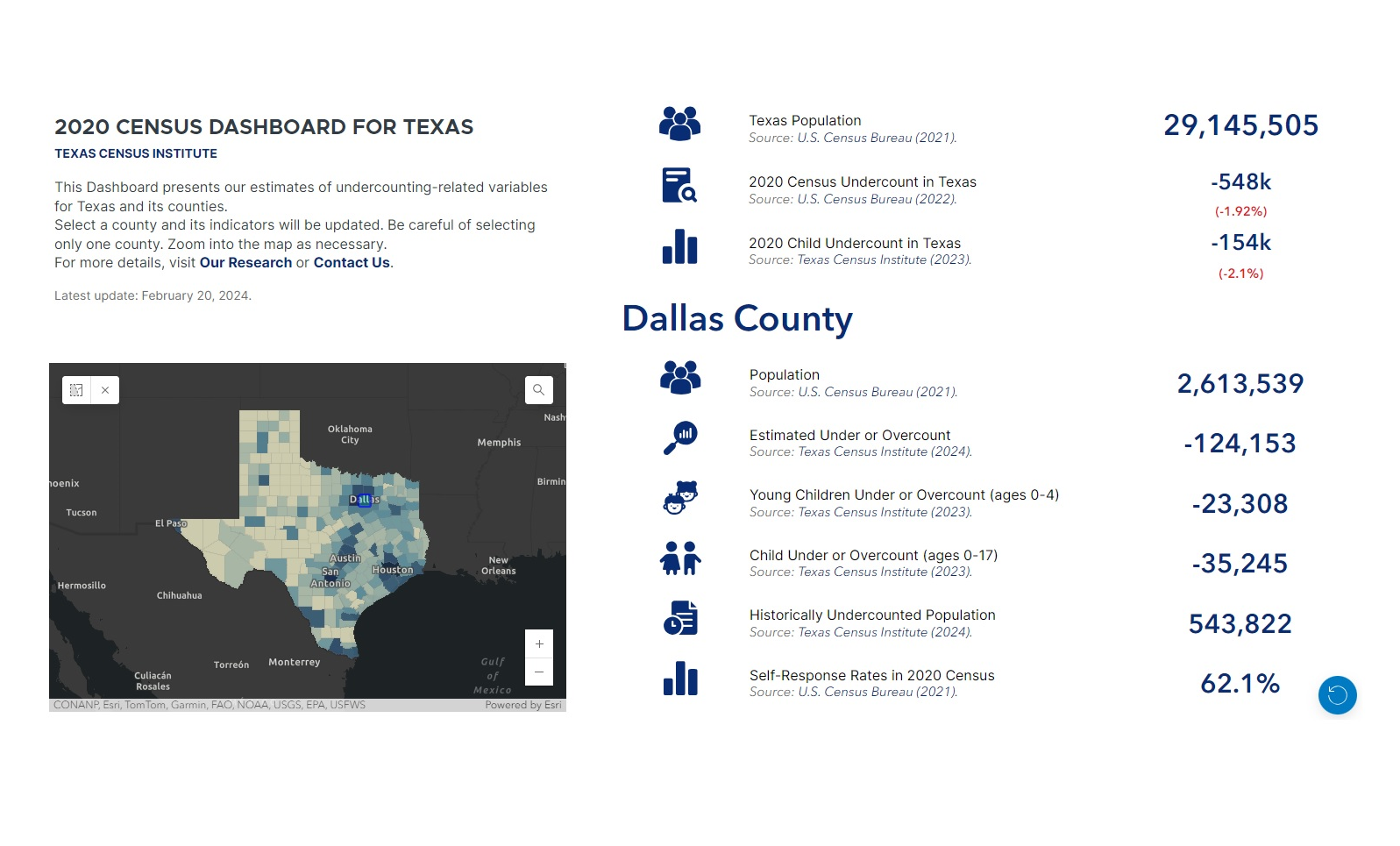RESEARCH BRIEF | Children | September 2023
TEXAS COUNTIES WITH HIGH CHILD UNDERCOUNTS IN THE 2020 U.S. CENSUS
In partnership with Dr. Bill O’Hare from Count All Kids, this research studies Texas counties’ high rates and numbers of child undercounting in the 2020 Census.
By: Dr. Francisco A. Castellanos-SosaA, Texas Census Institute, Senior Research Associate
Dr. William P. O’Hare, Count All Kids Campaign, Consultant
The Children’s Census Initiative
The Texas Census Institute created the Children’s Census Initiative to improve the accuracy with which the 2030 Census will count Texas children. The initiative comprises five related parts, each tackling a specific aspect of this phenomenon to enable a thorough analysis and informed decision-making. This research brief is the first product of the initiative, and its objective is to serve as a descriptive overview of child undercounts in the state by providing an innovative measurement of children’s undercount in Texas counties and regions. The following four topics are part of this initiative and will study 1) the counties with high net child undercount in Texas, 2) the determinants of Texas child undercount, 3) its economic impact, and 4) its short-and long-term implications. Collectively, this initiative will offer valuable insights and recommendations for addressing the U.S. Census child undercount and empowering stakeholders with the knowledge for effective decision-making and action.
Research Overview
Estimates suggest the 2020 Census undercounted 153,633 Texas children in net terms (2.1% of Texas children). While these state-level numbers are informative, some counties experienced much higher undercount rates. To inform this issue, we examine the 2020 county-level high net child undercount in Texas and study its spatial distribution using data from the 2020 Census and the Vintage 2020 Population Estimates. This study builds on the work of Dr. William P. O’Hare, who finds Texas had more counties with high net undercounts of children than any other state (either in number or rate terms).
Main Findings
Figure 1 Net undercount rate for children and adults:1950-2020

Note: Negative and positive values indicate net undercounting and net overcounting respectively.
Figure 2 Texas’ counties net child undercount rates and numbers.

Note: Uncolored counties experienced a net child overcounting.
Author’s Message
The net undercount of children (age 0 to 17) in the U.S. Census is high and has been growing in recent decades. This study provides a detailed analysis of high child undercounts at the county level in Texas and explores its regional patterns. These results can serve as a roadmap for deeper analysis.
Census-related data is used to determine the distribution of funding for 350+ federal programs, totaling more than $2.8 trillion each year. Counties with an undercount will not receive the full federal funding they are entitled to, impacting budgets for things like schools, health centers, and childcare centers. Furthermore, counties with an undercount will not have accurate data for future planning.
To address the impact of an undercount, leaders may want to explore ways to compensate counties that experience a high undercount of children. Similarly, leaders in counties with a high undercount of children may want to work with the Census Bureau to look for additional ways to correct the undercount of children in future censuses. The results shown here can be used to start building a targeted approach to increasing the count accuracy of children in the 2030 Census.
Acknowledgements: The authors appreciate the insightful support provided by Helen You, Deborah Stein, and Monica Cruz.
FAQ
1) Why does the U.S. Census Bureau not publish undercounting and overcounting estimates at the county level for children?
As it is well known, the U.S. Census Bureau assesses the quality (undercounting or overcounting) of its Decennial Census using the Post-Enumeration Survey (PES) and the Demographic Analysis (DA).
The PES was implemented in 2020 by characteristics of the housing units only to the national and state levels. The PES uses the location of the housing units to obtain results at the subnational level, but it does not consider demographic characteristics such as age or gender. Moreover, “…the sample size for the 2020 PES and the assumptions required to make unbiased sub-state estimates, the Census Bureau was unable to include county or place estimates in the 2020 PES reports, as well.” (U.S. Census Bureau, 2022).
On the other hand, the Demographic Analysis uses “…current and historical vital records, data on international migration, and Medicare records to produce national estimates of the population on April 1 by age, sex, the DA race categories, and Hispanic origin.” (U.S. Census Bureau, 2022). While the DA is rich in demographic characteristics, it cannot identify the current place of residence of the population since a great part of it is based on vital records. Therefore, due to its nature, the official undercounting or overcounting by demographic characteristics is estimated at the national level only.
Therefore, it is not possible to obtain an official undercounting and overcounting estimate at the county level for children.
2) Why are we using counties as geographies?
This approach implies that undercounting estimation is built upon variables that are considered determinants of undercounting, according to the theory.
3) How accurate or precise are our net child undercount estimates?
While there is no statistical measure of accuracy or precision for our estimates, they were built using official publicly available data from the U.S. Census Bureau.
4) Why are we focusing on counties with high net child undercounts?
Given the potential small random errors in the 2020 Census and the Vintage 2020 Population Estimates, a small difference between them might not necessarily reflect a true net undercount or an overcount. While small net undercounting can be important, our contribution relies on identifying the Texas counties where the net child undercount could be considered a serious problem. By focusing only on counties with high net child undercounts, we are more likely to identify the correct direction of net child undercount.








